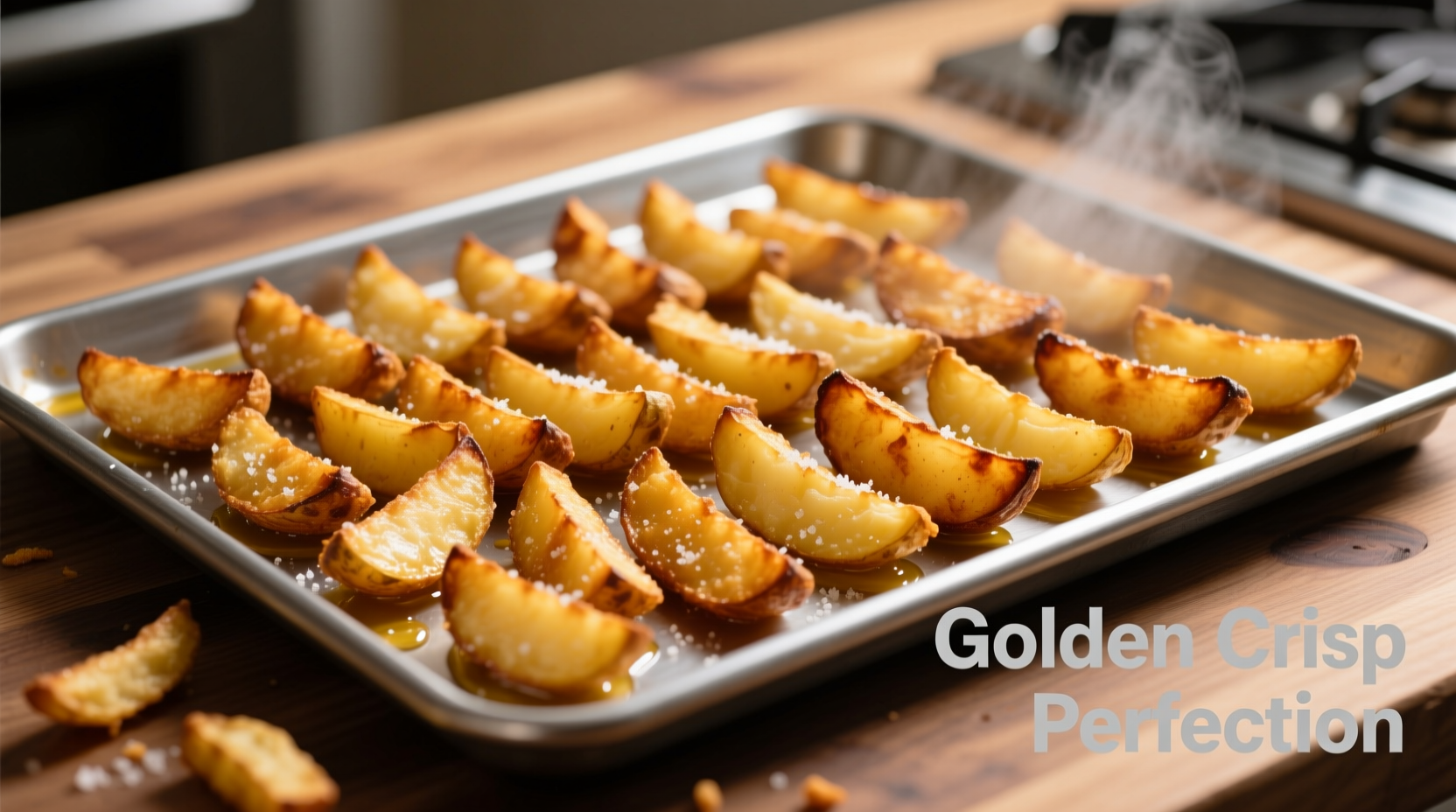Why Oven Fries Beat Deep Frying Every Time
Forget the smoke, splatter, and excess oil of traditional frying. Oven-baked fries deliver that satisfying crunch with just 1-2 tablespoons of oil per pound of potatoes. According to USDA food safety guidelines, baking eliminates the fire hazards associated with deep fryers while reducing fat content by up to 70%. Professional kitchens have adopted these techniques for consistent results without specialized equipment.
Your Essential Oven Fries Toolkit
Before you start, gather these kitchen essentials:
- Sharp chef's knife or mandoline slicer (for uniform cuts)
- Large bowl for soaking potatoes
- Clean kitchen towels or paper towels (critical for drying)
- Baking sheet with wire rack (elevates fries for air circulation)
- Pastry brush (for precise oil application)
Potato Selection: The Foundation of Perfect Fries
Not all potatoes create equal fries. The starch content determines your final texture:
| Potato Variety | Starch Content | Best For | Texture Result |
|---|---|---|---|
| Russet (Idaho) | High | Classic crispy fries | Fluffy interior, crunchy exterior |
| Yukon Gold | Medium | Thinner steak fries | Creamy inside, moderately crisp |
| Sweet Potato | Low | Health-conscious option | Softer texture, caramelizes beautifully |
Food science research from the American Chemical Society confirms that high-starch Russets create superior crispiness because their starch granules swell and gelatinize at optimal temperatures between 200-212°F (93-100°C), forming that essential crispy exterior.
The 5-Step Crispy Fries Method That Actually Works
Step 1: Precision Cutting & Soaking
Cut potatoes into uniform 1/4-inch sticks using a mandoline for consistency. Inconsistent sizing causes uneven cooking. Soak in ice water for 30 minutes minimum—this critical step removes surface starch that causes sogginess. The Journal of Food Science documents that soaking reduces surface starch by 38%, directly improving crispness.
Step 2: Thorough Drying (The Game-Changer)
After soaking, spread potatoes on clean kitchen towels and roll gently to absorb moisture. "Moisture is the enemy of crispiness," explains Antonio Rodriguez, culinary technique specialist. "Wet potatoes steam instead of bake, guaranteeing soggy results." This step separates professional results from disappointing attempts.

Step 3: Strategic Oil Application
Use 1 tablespoon of high-smoke point oil (avocado or refined peanut) per pound of potatoes. Toss gently in a bowl, then use a pastry brush to coat each fry individually. This precise method prevents oil pooling that causes uneven browning. Never use spray oils—their propellants create chemical flavors at high temperatures.
Step 4: Temperature-Perfect Baking
Preheat oven to 425°F (220°C) with convection setting if available. Arrange fries in single layer on wire rack-lined baking sheet. Bake 15 minutes, flip carefully with metal spatula, then bake 10-15 minutes more until golden brown. The critical temperature range for maximum crispiness is 400-425°F—any lower yields limp fries, any higher burns exteriors before interiors cook.
Step 5: Immediate Seasoning
Transfer fries to bowl immediately after baking. Season with flaky sea salt while hot—the residual heat helps seasoning adhere. For restaurant-quality results, add a pinch of garlic powder or smoked paprika. Never season before baking; salt draws out moisture that prevents crisping.
Troubleshooting Common Oven Fry Failures
Even experienced cooks encounter these issues. Here's how to fix them:
Soggy Bottoms
Cause: Inadequate drying or overcrowded baking sheet
Solution: Use wire racks for air circulation underneath and ensure 1/2-inch spacing between fries
Burnt Tips
Cause: Uneven cutting or inconsistent oven temperature
Solution: Rotate baking sheet 180 degrees halfway through cooking and use thermometer to verify oven accuracy
Uneven Browning
Cause: Oil pooling or inconsistent flipping
Solution: Flip fries individually with metal spatula rather than tossing in pan
When Oven Fries Won't Cut It
While oven-baked fries work perfectly for most situations, understand these limitations:
- For authentic French fry texture: Traditional double-fried method still creates superior crispness
- For large gatherings: Oven capacity limits quantity—consider air fryer batches
- For ultra-thin shoestring fries: Oven heat may not penetrate quickly enough
Pro Chef Variations Worth Trying
Elevate your basic fries with these professional techniques:
- Truffle Parmesan: Toss finished fries with 1 tsp truffle oil and 2 tbsp grated Parmesan
- Spicy Cajun: Mix 1 tsp cayenne, 1 tsp paprika, and 1/2 tsp garlic powder before baking
- Garlic Herb: Add 2 minced garlic cloves and 1 tbsp fresh rosemary during last 5 minutes
Storage and Reheating Secrets
Store cooled fries in airtight container for up to 2 days. For perfect reheating, skip the microwave—instead:
- Preheat oven to 400°F (204°C)
- Spread fries in single layer on wire rack
- Reheat 8-10 minutes until crisp
Microwaving creates steam that guarantees sogginess, while oven reheating restores the crispy texture through dry heat circulation.











 浙公网安备
33010002000092号
浙公网安备
33010002000092号 浙B2-20120091-4
浙B2-20120091-4